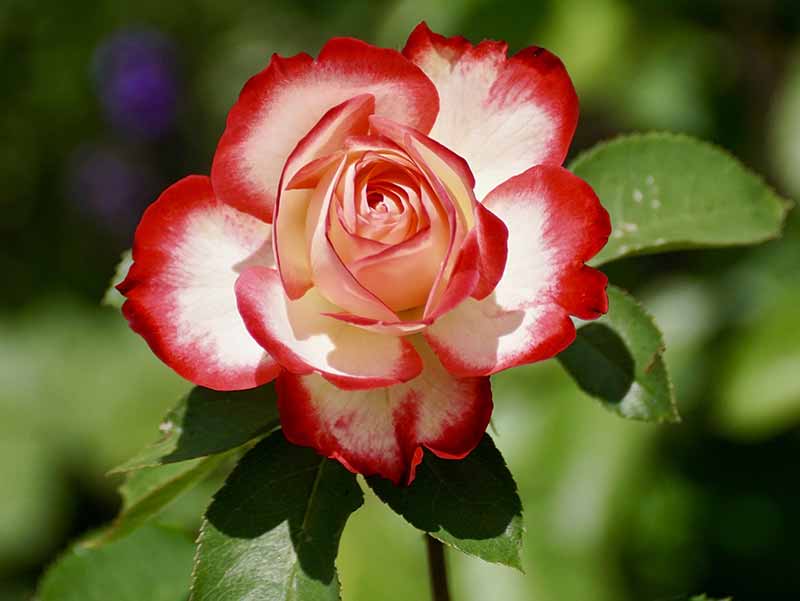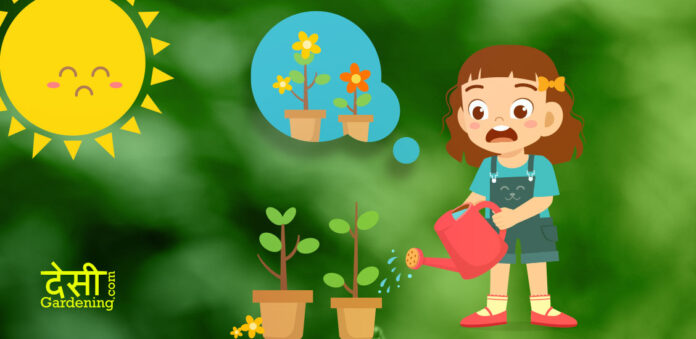Namaskar Desi Gardeners. Why is my plant not blooming? Every gardener has faced this situation some time, probably every year. We bring nice plants from the nursery. We take good care, fertilize, water, apply sprays and what not. Sometimes the plant grows well and yet there are no flowers. In this post, let us see what could happen with with roses, hibiscus and kalanchoe.
The truth is each type of plant could have a different cause. Let me tell you from my experience and how I solved it.
Summary: Understanding Kalanchoe Problems with Rose Plants Why is Hibiscus not blooming?
Why my plant was not blooming in spite of every care?
Let us take the case of Rose, Hibiscus and Kalanchoe here.
Understanding Kalanchoe

In my experience kalanchoe blooms in later part of the winter, say from mid-January. It may vary in your climate. It blooms once every year. Although I have heard people reblooming their kalanchoe again after keeping in dark, I have not tried it.
One of the mistakes we do with kalanchoe is that we forget that it is a succulent, that is, it like a cactus plant. It requires less water. Once a week should be enough.
Secondly, it needs well balanced fertilizer in its soil and also as a spray. This helps it to grow and form more buds. After the raining season is over fertilize it with rich plant food for the upcoming season.
Problems with Rose Plants
This is one of the most common complaints. Many rose plants stop blooming. I had got my deep pink rose plant from the nursery that had flowers and buds. After the flwering was over, I cut off the dead flowers, repotted it. Initially it started to grow well but no buds were coming up.

The reasons could be –
- The growth of suckers
This is the most common reason. Mine had this issue. Hybrid roses, also called English roses are made by using the root system of the desi rose and the branches of another hybrid. These two plants are grafted near the base of the plant. You will see a bulging point near the bottom of the plant. Do not let any branch come from below this point. If you see such a new growth pluck it off because we want the hybrid rose part to grow. The desi plant will get bushy and will dry out the upper branches.
After I cut off the sucker, new branches and then buds came up. Maximum rose plants have the same issue. - Over or insufficient requirements
Rose plants are not very fussy but they need some conditions. Full sun in winter, partial shade in summer. Soil should be hydrated but not soggy wet. Soil should be rich with compost but not over-fertilized with chemical ones. Growing a rose requires a different set of knowledge. It sounds difficult at first but once you get your hands to it, you get the hang of it.
- Blind shoots
Blind shoots have occurred in my plants too. Blind shoots are like dead ends in the plant. A soft branch divides into leafy branches but no further growth happens and no buds come up. This is a common problem when the temperature is too less in the winters along with fog.
There are two ways to fix blind shoots. When my plant was not blooming, I identified and cut off that blind shoot. Then I applied micronutrients. You can also apply seaweed fertilizer if you have. That should fix the issue.
- Pests and diseases
This applies to all plants. However in rose plants, getting yellow leaves is an issue. Wash the plants in early morning and apply neem or medicinal sprays regularly.
Why is Hibiscus not blooming?
I have several years of experience of growing hibiscus. When my hibiscus plant was not blooming, there were several reasons.
- Buds came but did not flower – There was a severe infestation of mealy bugs on my 8 feet tall sandal coloured desi hibiscus that was planted on the ground. The insects were sucking off the juice of the hundreds of buds. Obviously it very difficult to spray on such a big plant especially on the taller stems. Here notice that mealy bugs are always accompanied by ants. Ants protect them and in return extract honeydew from the bugs.So the solution was to stop the ants which were all over the trunk of the plant and had probably made a nest somewhere near in the ground. To get rid of these, I washed the plant with detergent powder mixed in water and also put it in the soil around the plant. To the places my hand would not reach, I tried to spray or wash with a strong jet of water. In the branches where the bugs were too much, I cut it off and burnt the stems so that it does not spread to other plants.
View this post on Instagram
- Buds falling off – When buds fall off it could mean two things – stress or insect. There are some tiny insects that affect buds and cause the buds to yellow or wither and then fall off. Second reason is stress due to over or under watering and fertilization. If the problem persists, maybe there is some plant disease which could even kill the plant. I have lost a Viceroy hibiscus because the nursery soil and pot (which I had kept as it is) led to root rot due to poor water drainage during the monsoon.
- The type of plant – Hybrid varieties like ‘Australian’, ‘Bangalore’ and ‘Pune’ will bloom almost all through the year, pausing only in chilly winters. These plants grow well in pots and their size are not as big as the desi ones. Desi hibiscus plant will not bloom in colder season at all. Some desi varieties will not bloom until they have grown tall.
- Lack of potash and acidic soil – Hibiscus loves acidic soil and potash. Add a handful vermicompost and regularly apply mustard cake fertilizer. Also add potash to its feed. This will bring many new blooms to your hibiscus.
If your plant is not blooming, you can follow these tips. This should bring back the blooms. If you still have any question, connect with me on Instagram @desigardeningdotcom





























